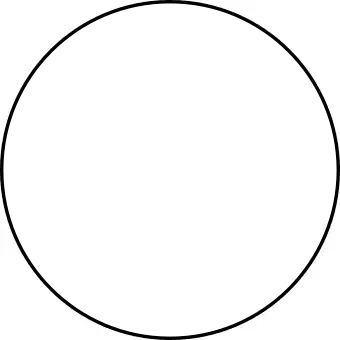Schubart family
The Schubart family (002[1]) is a collisional asteroid family of at least 353 known asteroids,[2] named for its largest member, the 67-kilometre (42 mi)-across asteroid 1911 Schubart. It lies within the larger dynamical group of Hilda asteroids, a group of asteroids in the 3:2 orbital resonance with Jupiter. Like its namesake, it's named after the largest member, 1911 Schubart. All members of the family are dark P-type asteroids with albedos of around 0.04. Another asteroid family in the Hilda dynamical group is the Hilda family, named for its largest member, 153 Hilda.
An asteroid family is a group of physically-related asteroids usually created by a collision with an original larger asteroid, with the fragments continuing on similar orbits to the original. This is distinct from a dynamical group in that the members of a dynamical group only share similar orbits because of gravitational interactions with planets, which concentrate asteroids in a particular orbital range. Members of the Schubart family are both part of the wider Hilda dynamical group, and fragments of a single original asteroid. The family is considered a catastrophic asteroid family because even its largest member, 1911 Schubart, does not make up a majority of the family's mass.[3]
The family is fairly old, with an estimated age of 1.7±0.7 billion years.[4] Although this is old by the standards of typical asteroid families, the Hilda collisional family in the same orbital region is much older, possibly 4 billion years in age.[4]
Large members
- 1911 Schubart: 3.2 (46.3%)
- 3923 Radzievskij: 0.293 (4.2%)
- 4230 van den Bergh: 0.256 (3.7%)
- (8376) 1992 OZ9: 0.245 (3.5%)
- (13035) 1989 UA6: 0.226 (3.3%)
- 9829 Murillo: 0.149 (2.2%)
- 8550 Hesiodos: 0.116 (1.7%)
- (15615) 2000 HU1: 0.104 (1.5%)
- (8913) 1995 YB2: 0.0698 (1.0%)
- (12307) 1991 UA: 0.0552 (0.8%)
- all other members: 2.19 (31.7%)
| Name | Abs. Mag | Size (km) | proper a (AU) |
proper e |
proper i |
|---|---|---|---|---|---|
| 1911 Schubart | 10.04 | 67 | 3.9659 | 0.191 | 2.916 |
| 3923 Radzievskij | 11.77 | 30 | 3.9661 | 0.196 | 2.874 |
| 4230 van den Bergh | 11.87 | 28 | 3.9661 | 0.197 | 2.853 |
| (8376) 1992 OZ9 | 11.90 | 28 | 3.9659 | 0.190 | 2.793 |
| (13035) 1989 UA6 | 11.96 | 27 | 3.9661 | 0.195 | 2.879 |
| 9829 Murillo | 12.26 | 26 | 3.9659 | 0.192 | 2.855 |
| 8550 Hesiodos | 12.44 | 25 | 3.9658 | 0.190 | 2.834 |
| (15615) 2000 HU1 | 12.52 | 22 | 3.9662 | 0.198 | 2.982 |
| (8913) 1995 YB2 | 12.81 | 20 | 3.9662 | 0.197 | 2.898 |
| (12307) 1991 UA | 12.98 | 20 | 3.9660 | 0.193 | 2.889 |
References
- ^ Nesvorny, D.; Broz, M.; Carruba, V. (2015). Identification and Dynamical Properties of Asteroid Families. arXiv:1502.01628. Bibcode:2015aste.book..297N. doi:10.2458/azu_uapress_9780816532131-ch016. ISBN 978-0-8165-3213-1.
{{cite book}}:|journal=ignored (help) - ^ a b Nesvorný, David (14 August 2020). "Nesvorny HCM Asteroid Families | PDS SBN Asteroid/Dust Subnode". NASA Planetary Data System. doi:10.26033/6cg5-pt13. Retrieved 28 July 2024.
- ^ Holsapple, K.A.; Housen, K.R. (December 2019). "The catastrophic disruptions of asteroids: History, features, new constraints and interpretations". Planetary and Space Science. 179: 104724. Bibcode:2019P&SS..17904724H. doi:10.1016/j.pss.2019.104724. Retrieved 30 July 2024.
- ^ a b Vinogradova, T. A. (13 October 2015). "Identification of asteroid families in Trojans and Hildas". Monthly Notices of the Royal Astronomical Society. 454 (3): 2436–2440. doi:10.1093/mnras/stv2115. Retrieved 30 July 2024.
